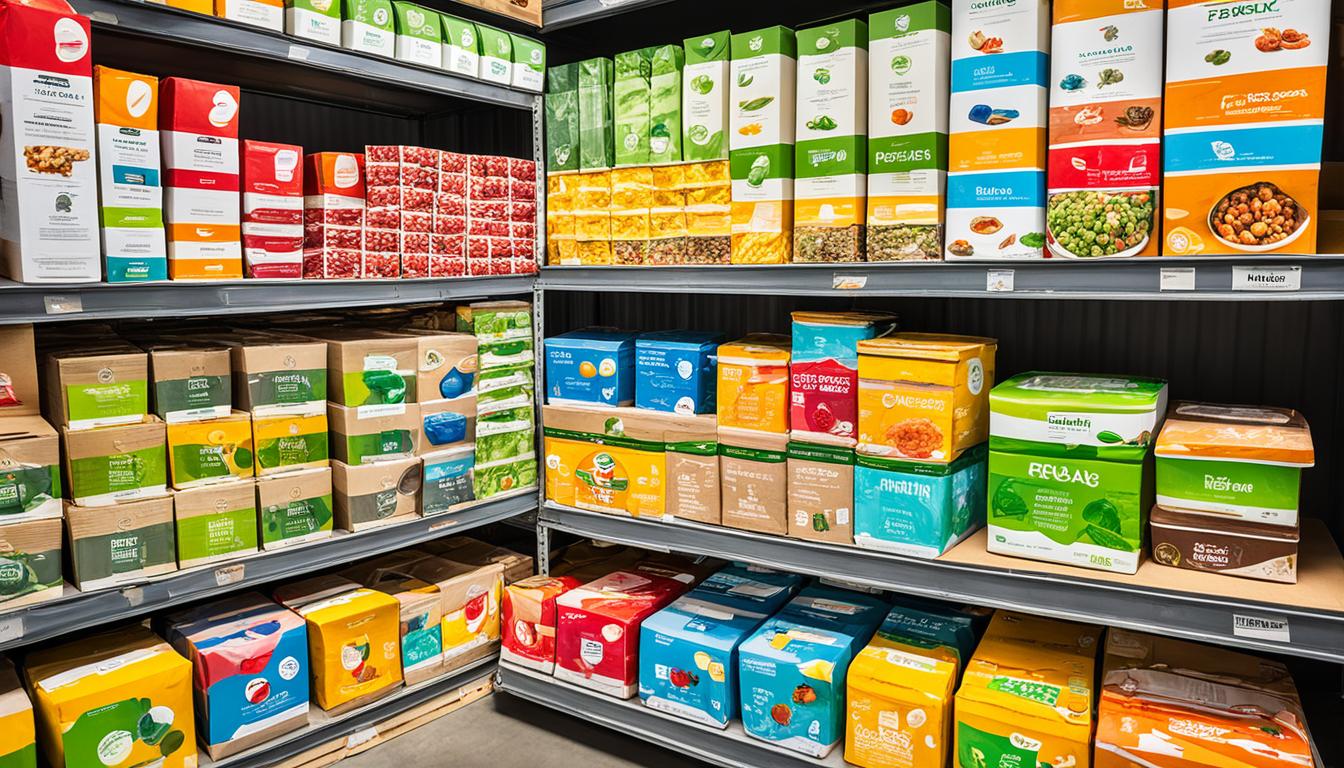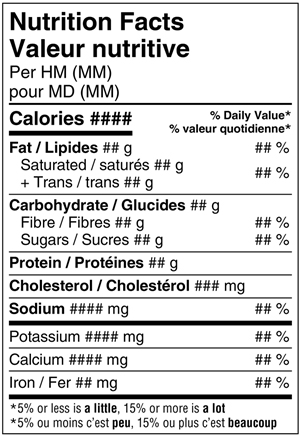Are you a home-based food business owner in Ontario?
The province has specific guidelines that must be followed when it comes to packaging and labelling food items. Knowing the ins and outs of these regulations is essential for your business’s success.
Those guidelines are crucial for ensuring compliance, and the safety of your products, building trust with your customers and enhancing your brand reputation.
Key Topics Covered
- requirements for ingredient lists and nutrition facts
- knowing how to properly label allergens
- use bilingual labelling
As a home-based food business owner, staying informed about Ontario’s regulations is vital.
So, let’s dive in and demystify Ontario’s food packaging and labelling regulations for your small e-commerce business.
The Importance of Compliance with Food Packaging and Labelling Regulations
Ensuring compliance with food packaging and labelling regulations is of utmost importance for home-based food businesses in Ontario. These regulations are in place to protect the health and safety of consumers, as well as to provide them with accurate information about the food products they purchase.
By following these regulations, you demonstrate your commitment to transparency and quality, which can significantly impact your brand reputation.
Non-compliance with food packaging and labelling regulations can result in severe consequences for your home-based food business, such as shutting down your business in the worst-case scenario.
Additionally, non-compliant products can lead to customer complaints, legal issues, and damage to your business’s reputation.
Overview of Ontario’s Food Packaging and Labelling Regulations
Ontario’s food packaging and labelling regulations are governed by the Food and Drugs Act and the Food and Drug Regulations. These regulations outline the requirements for packaging, labelling, and advertising of food products in the province.
As a home-based food business owner, you must comply with these regulations to ensure the safety and integrity of your products.
The regulations cover a wide range of aspects, including ingredient lists, nutrition facts, allergen labelling, language requirements, and more.
It is essential to familiarize yourself with these regulations and ensure that your packaging and labelling meet the specified requirements.
Key Requirements for Food Packaging

When it comes to food packaging, there are specific requirements that must be met to ensure compliance with Ontario’s regulations:
- Product Identity: The packaging must accurately represent the product’s identity, including the name, brand, and description. It should provide clear information to consumers about what they are purchasing.
- Product Quantity: The packaging must display the net quantity of the product in metric units (e.g., grams, millilitres) to provide accurate information to consumers. The quantity must be clearly visible and not misleading.
- Durable and Tamper-Proof: The packaging should be durable and tamper-proof to ensure the integrity and safety of the product. It should protect the food from contamination and tampering during storage and transportation.
- Child-Resistant Packaging: If your product poses a risk to children, such as containing medication or hazardous substances, it must be packaged in child-resistant packaging. This requirement aims to prevent accidental ingestion or exposure.
- Recall Information: The packaging should include contact information for the manufacturer or distributor in case of product recalls. This information enables consumers to report any issues or concerns regarding the product.
By adhering to these key requirements, you can ensure that your food packaging meets the standards set by Ontario’s regulations.
Labelling Requirements for Home-Based Food Businesses
Proper labelling is essential for providing consumers with accurate information about your food products. Ontario’s food packaging and labelling regulations specify several requirements for labelling home-based food businesses should follow:
- Ingredient List: All packaged food products must include a detailed ingredient list. The list should be in descending order of weight, with the most substantial component listed first. It should accurately reflect all ingredients used in the product, including any additives or allergens.
- Nutrition Facts: In most cases, home-based food businesses are required to provide nutritional information on their packaged products. This includes information on calories, fat, carbohydrates, protein, and other relevant nutrients. The format and layout of the nutrition facts panel should follow specific guidelines outlined in the regulations.
- Allergen Labeling: If your product contains any of the major food allergens, such as peanuts, tree nuts, milk, eggs, or wheat, you must clearly label them. The allergen information should be easily noticeable and placed in proximity to the ingredient list to ensure consumers are aware of potential allergens.
- Bilingual Labeling: In Ontario, bilingual labelling is required for most food products. The labels must be in both English and French, with both languages given equal prominence. This requirement ensures that all consumers can understand the information provided on the packaging.
Nutritional Labelling Guidelines

Providing accurate nutritional information on your food products is essential for consumers who want to make informed choices about their diet:
- Serving Size: The nutritional information should be based on a specific serving size as determined by the regulations. This allows consumers to compare the nutritional content of different products accurately.
- Calories: The number of calories per serving should be clearly stated on the packaging. This information helps consumers monitor their calorie intake and make healthier choices.
- Fat, Carbohydrates, and Protein: The packaging should provide information on the amount of fat, carbohydrates, and protein per serving. This allows consumers to understand the macronutrient content of the product.
- Vitamins and Minerals: If your product contains significant amounts of vitamins or minerals, you may choose to include this information on the packaging. However, it is not mandatory unless a claim is made regarding the nutrient content.
By following these guidelines, you can provide consumers with meaningful and accurate nutritional information about your baked goods, jams & jellies or condiments…
Allergen Labelling Requirements

Proper allergen labelling is crucial for individuals with food allergies or sensitivities. Ontario’s food packaging and labelling regulations require clear allergen labelling to ensure consumer safety:
- Allergen Identification: If your product contains any of the major food allergens, you must clearly identify them on the packaging. This can be done through a separate “Contains” statement or by listing the allergens in the ingredient list using bold, italics, or underlined text.
- Cross-Contamination: If there is a risk of cross-contamination with allergens during the manufacturing process, you should include a precautionary statement on the packaging. This statement alerts consumers to the potential presence of allergens, even if they are not listed as ingredients.
Ensuring accurate allergen labelling helps individuals with food allergies make informed choices and avoid potentially harmful reactions.
Language and Font Size Requirements for Food Labels
In Ontario, bilingual labelling is required for most packaged food products. The regulations specify specific requirements regarding the language and font size used on food labels:
- English and French: Food labels must be in both English and French. Both languages should be given equal prominence and legibility.
- Minimum Font Size: The regulations specify a minimum font size for various elements on the label, including the product name, ingredient list, nutrition facts, and allergen information. These requirements ensure that the information is easily readable by consumers.
Adhering to these language and font size requirements ensures that all consumers can understand the information provided on the packaging.
Packaging and Labelling Resources for Home-Based Food Businesses
Navigating Ontario’s food packaging and labelling regulations can be challenging, especially for home-based food businesses. Fortunately, there are resources available to help you understand and comply with these regulations:
- Ontario Ministry of Agriculture, Food and Rural Affairs (OMAFRA): OMAFRA provides guidance and resources for food businesses in Ontario, including information on packaging and labelling requirements. Their website offers helpful documents, checklists, and templates to assist you in meeting regulatory requirements.
- Canadian Food Inspection Agency (CFIA): CFIA is responsible for enforcing food labelling regulations in Canada. Their website provides comprehensive information on labelling requirements, including guidance documents and contact information for further assistance.
- Industry Associations and Organizations: Joining industry associations and organizations can provide valuable support and guidance on packaging and labelling compliance. These groups often offer workshops, webinars, and networking opportunities to help home-based food businesses navigate regulatory requirements.
Conclusion and Final Tips for Compliance with Ontario’s Food Packaging and Labelling Regulations
Understanding and complying with Ontario’s food packaging and labelling regulations is crucial for the success of your home-based food business.
By adhering to these regulations, you can ensure the safety and integrity of your products and build trust with your customers.
Remember these final tips for compliance:
- Stay Informed: Keep up to date.
- Seek Professional Guidance: consider consulting with a regulatory expert or professional specializing in food labelling.
- Review and Revise: Regularly review your packaging and labelling to ensure ongoing compliance.
By following these tips and staying informed, you can navigate Ontario’s food packaging and labelling regulations with confidence and ensure the success of your home-based food business.
By doing so, you not only protect your customers but also set a strong foundation for the growth and success of your small e-commerce business.
FreshFind is your go to free eCommerce tool, built for home-based food makers. Check us out today and excel your business to the next level.





GIPHY App Key not set. Please check settings